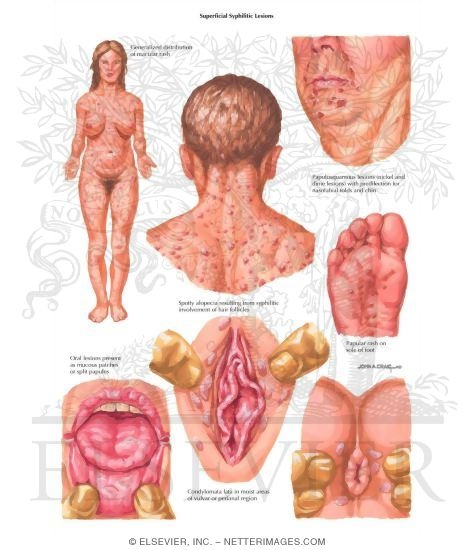Omiting for the present all considerations of the questions about simple and syphilitic gonorrhoea, and taking it for granted the secondary syphilitic phenomena always originate in some manifest or concealed chancre, or in something equivalent, such as buboes or mucous tubercles, as their remote cause, an equally important question will then arise: Under what conditions will primary syphilis be capable of causing secondary phenomena? It is an admitted fact that secondary phenomena always arise when the primary symptoms are either neglected or removed by external applications alone; another question is, whether secondary phenomena can develop themselves even after the primary infection had been apparently eradicated from the system by means of the most appropriate specific internal treatment, in consequence of which, all external manifestations of the internal disease had been completely removed and extinguished. Concerning this question we have no reliable records, for the reason that authors have not paid the least attention to the important distinction between a real chancre-cure effected by the internal administration of specific antidotes, and a mere cicatrization of the chancre by external applications; or for this additional reason that, even where the cure had been effected by internal means, the patient had taken such large quantities of Mercury that it would be difficult or even impossible to decide whether the secondary phenomena, manifesting themselves subsequently to the supposed cure, were really of a syphilitic character, or rather the result of excessive mercurial action. On this account I have only my own experience to refer to,
 |
| Secondary syphillis |
and am enabled to assert that, among all the patients whom I have treated for the last thirty years for primary syphilis, I have never seen a single sign of the syphilitic disease manifesting itself even ten or twenty years after the internal use of specific antidotes; the only untoward symptom that may have occasionally shown itself was, perhaps, an evanescent manifestation of excessive mercurial action, which, owing to the smallness of the doses administered, soon passed away again forever. What I am able to assert of the cure of chancre while yet in the stage of primary ulceration. I am unfortunately not able to assert of the cure of chancre after it had passed into the stage of fungoid growth, or had become complicated with buboes, tubercles, or figwarts, and hence was on the point of entering into the secondary period. In such cases, even after the primary symptoms had been completely and apparently radically removed by the use of Merc. sol., Nitri. ac., or Thuja, I have often, even after the lapse of three, eight, or even eighteen months, seen syphilitic phenomena still make their appearance, consisting almost without an exception of unimportant cutaneous affections that never assumed the form of extensive syphilidæ, and yielded very speedily to proper treatment without ever returning; but, if neglected by the patient, became very obstinate and remained visible for a long period; all of which shows in the most indubitable manner that, if the primary symptoms have left their first stage of primary ulceration, their removal, even by the best internal treatment, may not constitute a perfectly complete cure of the syphilitic disease, and not all danger may as yet be obviated.